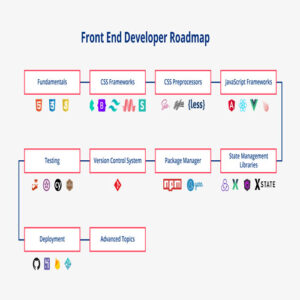In recent years, the digital landscape has undergone a profound transformation with the widespread adoption of cloud computing. While cloud technology offers numerous benefits such as scalability, flexibility, and cost-effectiveness, it has also introduced new security challenges. Among these challenges, cyber-attacks targeting cloud infrastructure have emerged as a significant threat to organizations of all sizes across various industries.
Introduction to Cloud Cyber-Attacks
A cloud cyber-attack refers to any malicious activity aimed at compromising the security of cloud-based systems, applications, or data. These attacks exploit vulnerabilities in cloud infrastructure, platforms, or services to gain unauthorized access, steal sensitive information, disrupt operations, or cause other forms of harm.

Types of Cyber-Attacks on Cloud Infrastructure
- Data Breaches: One of the most common types of cloud cyber-attacks involves unauthorized access to sensitive data stored in the cloud. Attackers may exploit misconfigured security settings, weak authentication mechanisms, or vulnerabilities in cloud applications to gain access to confidential information such as customer data, intellectual property, or financial records.
- Distributed Denial of Service (DDoS) Attacks: DDoS attacks are designed to overwhelm cloud servers or networks with a flood of traffic, rendering them inaccessible to legitimate users. By launching DDoS attacks against cloud-based services, attackers can disrupt operations, degrade performance, and cause financial losses to organizations relying on cloud infrastructure for critical business functions.
- Malware Infections: Malicious software, such as viruses, worms, or ransomware, can infect cloud environments and compromise the integrity and availability of data stored in the cloud. Malware attacks on cloud infrastructure can occur through various vectors, including phishing emails, malicious links, or compromised applications, leading to data loss, system downtime, and financial damages.
- Insider Threats: Insider threats pose a significant risk to cloud security, as authorized users with privileged access to cloud resources may intentionally or unintentionally misuse their privileges to compromise sensitive data or sabotage cloud infrastructure. Insider attacks can be particularly challenging to detect and prevent, as they often involve legitimate credentials and bypass traditional security measures.
also read: 12 Methods to Boost Cybersecurity
Key Challenges in Defending Against Cloud Cyber-Attacks
- Complexity of Cloud Infrastructure: The dynamic and distributed nature of cloud environments introduces complexity in managing and securing infrastructure across multiple platforms, providers, and geographic regions. Organizations must adopt robust security measures and best practices to effectively protect their cloud assets from cyber threats.
- Shared Responsibility Model: Cloud service providers typically follow a shared responsibility model, wherein they are responsible for securing the underlying infrastructure, while customers are responsible for securing their data, applications, and configurations. This shared responsibility model can lead to confusion and gaps in security if organizations fail to understand their responsibilities and implement adequate controls.
- Lack of Visibility and Control: Limited visibility and control over cloud environments can make it challenging for organizations to detect and respond to cyber-attacks in a timely manner. Without comprehensive monitoring tools and security solutions, organizations may struggle to identify suspicious activities, assess security risks, and enforce compliance with security policies.
- Compliance and Regulatory Concerns: Regulatory requirements and industry standards impose additional obligations on organizations to protect sensitive data and ensure the security and privacy of cloud-based services. Failure to comply with these regulations can result in legal consequences, financial penalties, and damage to reputation, making it essential for organizations to prioritize cloud security and compliance efforts.

Best Practices for Mitigating Cloud Cyber-Attacks
- Implement Multi-Layered Security Controls: Adopt a defense-in-depth approach to cloud security by implementing multiple layers of security controls, including network firewalls, intrusion detection systems, endpoint protection, encryption, and access controls, to protect against various cyber threats and vulnerabilities.
- Regular Security Assessments and Audits: Conduct regular security assessments, vulnerability scans, and penetration tests to identify and remediate security weaknesses and misconfigurations in cloud infrastructure and applications. Additionally, perform periodic security audits and compliance assessments to ensure adherence to security policies and regulatory requirements.
- Employee Training and Awareness: Provide comprehensive cybersecurity training and awareness programs to educate employees about the risks of cyber-attacks, best practices for secure cloud usage, and how to recognize and report suspicious activities. Encourage employees to follow security policies and procedures and remain vigilant against social engineering tactics used by attackers.
- Continuous Monitoring and Incident Response: Implement robust monitoring solutions and security analytics tools to continuously monitor cloud environments for anomalous behavior, unauthorized access attempts, and security incidents. Develop and test incident response plans to effectively respond to cyber-attacks, minimize damage, and restore operations in the event of a security breach.
also read: VPN can improve your cyber security posture
Conclusion
In conclusion, cloud cyber-attacks pose significant threats to organizations leveraging cloud technology for their IT infrastructure and services. By understanding the different types of cyber-attacks targeting cloud environments, key challenges in defending against these threats, and best practices for mitigating risks, organizations can strengthen their cloud security posture and protect their sensitive data, applications, and operations from cyber threats. Collaborative efforts between cloud service providers, security vendors, and customers are essential to address evolving cyber threats and ensure the resilience and security of cloud-based systems in today’s digital era.










